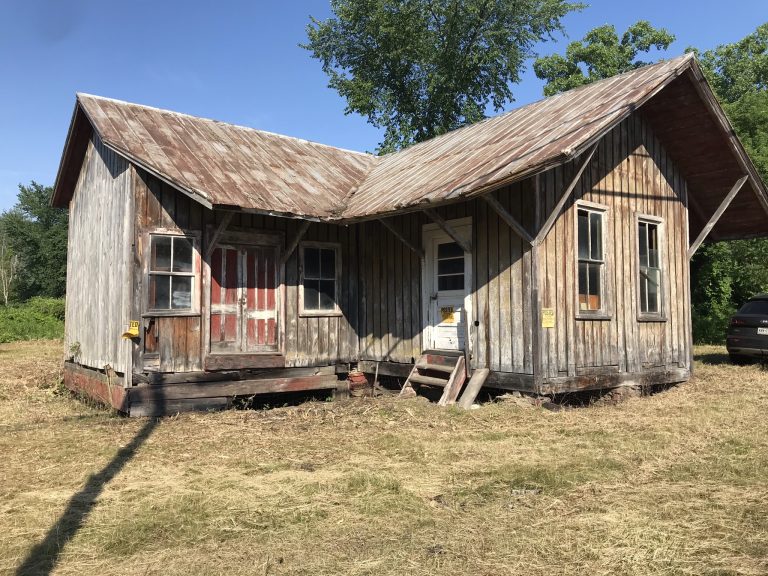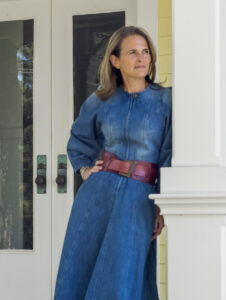
“You realize it would be faster and cheaper to just tear it down and rebuild it from scratch.”
My client and I stood outside the ca-1876 train depot she had purchased a few months earlier, the contractor who made this pronouncement silently eyeing us.
The moment of truth. Why did this property owner invest in this particular place? What about it captured her imagination? Running down the checklist of real estate motivations, was it the location? The view? The size? The bargain price? The sheer challenge and adventure of revitalizing a dilapidated building?
Her reasons for tackling this project would determine every decision moving forward, starting with whether to preserve…or reconstruct.
In my work as a historic rehabilitation strategist and real estate broker, I often meet people who say they want “a fixer upper”. The first thing I want to know is, why? Their answers help me match them to the right properties (the what), create the most appropriate rehabilitation strategy (the how), and build the ideal team (the who).
The “why” I hear most often is beauty. Many people genuinely admire the art, craftsmanship and mellow patina that shows the vestiges of minds, hands and lives lived. Through old places, we get a glimpse of historical events and human experiences, both momentous and mundane, that can only be accessed through direct physical contact.
Memory is another recurring theme – old places remind people of family, childhood, happy times that also connect to a sense of continuity and identity. Buildings trigger powerful thoughts and emotions that can enhance (or undermine) our psychological well-being, both individually and as a community. The health benefits extend to our planet since every building that gets rehabbed – i.e., recycled – instead of torn down and thrown away is a win for sustainability.
And then there are the economics of historic preservation, circling back to the train depot and our contractor’s incisive observation about time and money, the “bottom line” in real estate investment. My client, the property owner, was on the spot – what was she investing in really? Historic rehabilitation is not the most obvious way to make money. If she had wanted a quick flip ROI, this was the wrong scenario.
Fortunately, her vision was bigger. Yes, she’d like to turn a profit eventually (the property will be a unique vacation rental). In the meantime, the town will benefit from renewed activity on a now-derelict site that was once part of its lifeblood. And the owner will satisfy other “whys” by restoring missing features shown in old photographs of the depot in its heyday, connecting to the history of railroad transportation and the rural society it served, and providing public access to a beautiful building and landscape.
After a thoughtful (suspenseful!) moment, she replied to the contractor: “I bought a 19th-century train station, and if I tear it down, it won’t be a train station anymore.” Decision made, course set, and every choice from now on (how to address windows, insulation, HVAC, etc.) is tethered to preserving this place.
 KATE WOOD grew up criss-crossing the country in the family’s Volkswagen Bus, visiting house museums, battlefields, Main Streets, and national parks. Today, she is an award-winning preservationist, real estate broker and principal of the full-service historic rehabilitation consulting firm, Worth Preserving. Kate believes in the essential value of old-building stewardship to sustain community character. For her, each property is a cause and each client a fellow advocate. She specializes in matching people with properties, skilled contractors, historic tax credits and other benefits to support top-tier rehabilitation projects. For advice and solutions to help unlock the potential of your old house join My Newsletter.
KATE WOOD grew up criss-crossing the country in the family’s Volkswagen Bus, visiting house museums, battlefields, Main Streets, and national parks. Today, she is an award-winning preservationist, real estate broker and principal of the full-service historic rehabilitation consulting firm, Worth Preserving. Kate believes in the essential value of old-building stewardship to sustain community character. For her, each property is a cause and each client a fellow advocate. She specializes in matching people with properties, skilled contractors, historic tax credits and other benefits to support top-tier rehabilitation projects. For advice and solutions to help unlock the potential of your old house join My Newsletter.